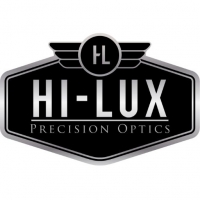Hi-lux optics

HISTORY OF JIM LEATHERWOOD AS TOLD BY CORBETT LEATHERWOOD
James Milner Leatherwood was born in Dublin, Texas on January 31, 1942. He was graduated from the Stephenville High School with the Class of 1960, and received his Bachelors Degree from Tarleton State University in 1964. He also received his Commission as an Officer in the United States Army from ROTC at Tarleton. And he served in Vietnam from 1967 through 1968.
While in the military, he realized the need for improved sniper optics. After leaving the Army, he developed his well known Automatic Ranging and Trajectory (ART) scope, some of which are still in use by U.S. military troops today in Iraq and Afghanistan. Using the ART system, the operator only needs to adjust the magnification to frame the known sized target within the brackets. The CAM system actually eliminated the need for the military marksman to know the actual range, or to know actual bullet drop.
Jim’s passion for firearms and optics invention continued through his life. One of his most recent efforts was the reproduction of the early 1850s-1870s style scopes (Malcolm) for shooters who enjoy older black powder rifles. Just before his passing on September 15, 2007, one of the Leatherwood “Wm. Malcolm” long-tube scopes made it to the big screen in the movie “3:10 to Yuma”.
HISTORY OF THE ART SCOPE
Leatherwood Optics was founded in 1966 in a trailer on the Leatherwood Range in Lingleville, TX. James Leatherwood and his brother Charlie prototyped an early version of a weapon sight known as the ART, or Automatic Ranging Trajectory.
The ART scope technology was born out of necessity in the early years of the Vietnam War. Enemy snipers were killing American servicemen, but the US Army was not equipped to deal with the guerrilla warfare tactics.
The solution was to place newly trained snipers into battlefield service as soon as possible. However, Sniper Training in the late 60’s – 70’s was a long term process that required numerous hours on the range to master skills such as estimating distance, and using the proper amount of “hold-over” in order to make successful first round hits.
About this time, 2nd Lieutenant James M. Leatherwood entered the Army and brought along his recently patented ART scope design. The basic concept of the ART scope lies in the integrated base’s ability to raise and lower the rear end. This eliminates the need for the shooter estimate holdover.
Shortly after, the Army had issued Leatherwood ART II scopes in the hands of Army snipers. The use of the new scope system had dramatic effects – greatly reducing the amount of time it took to train snipers. It was now possible to rapidly train snipers to get first round hits out to 900 meters, without having to devote previous time to distance estimation or “hold-over.” Soon, American snipers were dominating the field in Vietnam and the ART scope system became legendary.
Over the years, the ART scope system had been steadily improved under the discerning control of the original inventor James Leatherwood.
The core tenets of Leatherwood optics have always been to manufacture High Quality, Feature Rich optics that even the working class can afford. Jim Leatherwood, realizing that the average shooter could not afford the exorbitant prices being charged for quality rifle scopes began looking to take advantage of the global economy. In 1998, he met with John Wu to discuss details regarding manufacturing and developing the new ART Sporter II scope.
MEETING JOHN WU AND HI-LUX OPTICS
From 2001 thru 2007, Jim Leatherwood and John attended every SHOT Show. Multiple times throughout the day, they would discuss ideas on how to improve the quality of our scopes, and incorporate new innovative ideas. Some of these ideas include the M1000 interchangeable CAM (to be released late 2017), Uni-Dial Multiple Zero Ballistic Turret rifle scope.
Up until Jim’s untimely death in 2009, he was still heavily involved with the optical design and engineering for several Leatherwood and Hi-Lux scopes. After his passing, Leatherwood and Hi-Lux Optics merged to share resources and engineering.
At this time, the Hi-Lux began developing the CMR 1-4X scope and other modern electronic sights such as the MM-2. In 2015, Hi-Lux began developing the optical systems for high power FFP optics.
Hi-Lux offers the full gamut of optics from period correct vintage scopes for civil war re-enactments to the legendary ART system for hunting and long range shooting, to modern red dot and reflex sights and finally to first focal plane optics.
COMPETITIVE ADVANTAGE
While there are several scope companies around the world who source products overseas, none of them have or will develop their “top of line” high end model in China, perhaps due to fear of IP and copyright infringement.
The competitive advantage for Leatherwood Hi-Lux, is that we have our own solely owned factory and engineering team to design our products. Hi-Lux is committed to reversing the negative stigma behind “Made in China” products. It was only a couple decades ago when Japanese Manufacturing was viewed as shoddy and poor. However, now, several optical manufacturers source glass and other scope components from both Japan and China.
FEEDBACK FROM CURRENT AND FORMER MILITARY AND LAW ENFORCEMENT OFFICERS
All of Leatherwood Hi-Lux optics’ products are developed with feedback/insight from current and former US military officers, competitive shooters, NRA certified instructors, and outfitters.

comments